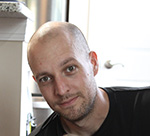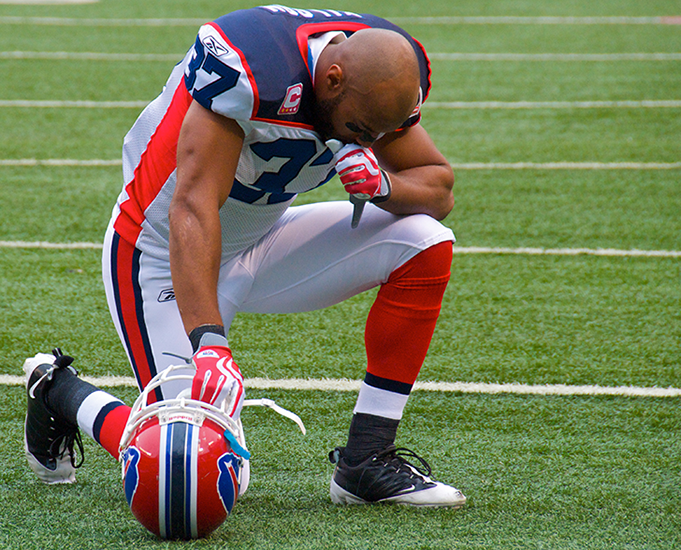Yoga in Theory and Practice: Pedagogical Strategies
Introduction
Each year I teach a course entitled Yoga and Tantra that traces the historical developments of traditions of Yoga and Hindu Tantra in South Asia while also looking at modern understandings and practices of Yoga and Tantra in the West. In the class, we examine contemporary debates surrounding modern-day conceptions of Yoga and Tantra, while also investigating the origins of these traditions and how they came to be thought of and practiced in the way they are today. In this article I want to focus specifically on a pedagogical strategy I have found useful in teaching students about the diverse historical tradition of yoga.
When approaching a subject as broad—and a word with as many different connotations—as yoga, it is rather difficult to find a single conceptual framework capable of uniting, and productively considering under its umbrella, the great variety of practices that have been called “yoga” (practices as radically different as the meditation-based yoga of the Upanishads and Patanjali, the subtle-body focused practices of tantric yoga, and the modern day postures of Bikram, Iyengar, and Pattabhis Jois). After some trial and error in how to think about these extremely different phenomena within one frame, I came upon two very productive theoretical frames: (1) asceticism, broadly construed, and (2) Michel Foucault’s “technologies of the self.” In order to teach students these concepts—which will allow them to understand all forms of yoga as a certain type of response to and expression of the human condition—while also stressing the unique features and perspectives of different historical forms of yoga, I give an essay assignment. While in other portions of my class, I use active learning techniques and conduct elaborate class debates, this particular assignment is more traditional. In certain respects it is quite conventional—hardly “cutting edge” pedagogy—but it works very well and accomplishes something very important; thus, it is well worth telling you about it.
A Conceptual Frame for Yoga across Time
In the first two weeks of my class, students trace the early history of yoga via its textual record by reading primary source selections from the Upanishads, the Mahābhārata (including the Bhagavad Gita), and Patanjali’s Yoga Sutra. Once they have this background regarding what early Indian yoga is, we read and discuss the following theoretical pieces: Richard Valantasis’s “A Theory of the Social Function of Asceticism”; the introduction of Gavin Flood’s The Ascetic Self; excerpts of Marcel Mauss’s “Techniques of the Body”; and excerpts of Michel Foucault’s “Technologies of the Self” and “On the Genealogy of Ethics.” Through these pieces, I present “asceticism” as physical and mental activities that form and transform the self, especially through performance, intentionality, and ritualized techniques of the body and mind. I encourage students to see asceticism operating at the concrete level of behavior: abstract, intangible concepts, values, and goals become purposeful behavioral patterns in and through asceticism. The performance of disciplined intention interiorizes and naturalizes certain types of behavior and emotion.
In class we discuss the core ideas in these theoretical pieces and how they might apply to yoga—whether ancient (which they’ve just gained some familiarity with) or modern (which they already have some level of familiarity with). The students are then given an essay assignment in which they’re asked to use the conceptual framework of Foucault’s “practices of the self”—as well as the theoretical frameworks offered by Valantasis and Flood regarding “asceticism”—to discuss how yoga and yoga practice are conceived in two of the following three primary sources: the Upanishads, the Bhagavad Gita, and the Yoga Sutra. The assignment asks them to consider these questions:
Specifically, what “operations” do these texts advocate one to perform upon oneself? (And specifically what aspect(s) of one’s ordinary “self” are targeted or acted upon?) What sort of transformation is sought and through what means? What is the end goal and what is the larger context of assumed ideas and worldviews within which that end goal makes sense? Do the two source texts you have chosen articulate different conceptions of the practice and goals of yoga? (If yes, then how so?)
Allow me to turn now to the logic for this assignment.
Applying Theory, Comparing Yogas
In his On Teaching Religion, Jonathon Z. Smith (2013) writes that he wants his students to know “that matters are always more complex than they first appear, and that this is liberating rather than paralyzing” (3). He makes a list of “rules” in the service of this end, two of which are directly applicable to the pedagogical strategy and assignment I am discussing. Smith states: “Nothing must stand alone. Comparison opens space for criticism.” He follows this by stating, “A student only knows something well if she can apply it to something else” (3). Comparison and application are at the heart of this assignment’s design.
I conceive the essay assignment I give my students as—to paraphrase John Bean—an opportunity both to do critical thinking and to produce a product communicating the results of that critical thinking. For many students, it is no easy task to translate abstract theoretical ideas to specific material. In this assignment, they come to see not only how “theory” can illuminate specific material “in practice,” but also they often find that the theoretical ideas do not fully make sense to them until they have used those ideas (a) to interpret the primary sources and (b) to serve as the basis for a comparison of those sources’ specific teachings on yoga. In other words, it is in the combination of application (of theoretical concepts to interpret and explain specific material) and analytic comparison (of the primary source teachings on yoga) that this assignment demands that it functions as an especially effective pedagogical tool.
From the Ancient to the Modern: New Applications
It seems to me that one mark of a good, pedagogically effective assignment, particularly one given early on in a course, is that it teaches ideas and skills that students will continue to draw upon and that can provide frameworks for processing and comparing new material in the course. This is certainly the aim of the essay assignment I have been describing. As we proceed in the course into different historical forms of yoga, from medieval to early modern South Asia, and then to the modern West, we continually return in class to the theoretical conceptualizations of “asceticism” and “technologies of the self” at the heart of the assignment I have been describing. Particularly when we get to the end of the course, to readings on and discussions of modern forms of postural yoga, students have found these frameworks invaluable for placing these contemporary styles of yoga—such as Bikram, Iyengar, and Pattabhis Jois’s Ashtanga Yoga—alongside traditional ancient and medieval South Asian forms of yoga and considering them all as techniques of body and mind which form and transform the self; i.e., mental and physical methods for constructing and performing a particular kind of self.
Students usually enter the course with very particular ideas of what yoga is. They also typically enter with very particular ideas about their selves; that is, notions about what “the self” is and, thus, who they are at their core. In the essay assignment that I give early on, and throughout the course, I give students theoretical frames for understanding the constructed nature of selfhood and ask them to apply these frames in comparing and contrasting different historical forms of yoga. In regularly returning to these frames and applying them to specific types of yoga in different time periods and social contexts, students learn—gradually and incrementally—to identify the assumptions embedded in different cultural and historical worldviews and to reflect on how these assumptions (about the nature and relationships of the human being, the natural world, and the Divine) lead to particular visions of and goals for “the self,” and thus to certain disciplined, deliberate patternings of behavior designed to realize those visions and goals. When, at the end of the course, we arrive at the yoga practices of contemporary American society, the students are in a position to successfully deconstruct the assumptions of our own culture and to see how contemporary forms of yoga work toward enacting historically specific notions of the self and the “good life.”
Resources
Bain, Ken. 2004. What the Best College Teachers Do. Cambridge, MA: Harvard University Press.
Bean, John C., and Maryellen Weimer. 2011. Engaging Ideas: The Professor’s Guide to Integrating Writing, Critical Thinking, and Active Learning in the Classroom. 2nd edition. San Francisco, CA: Jossey-Bass.
Smith, Jonathon Z. 2013. On Teaching Religion. Edited by Christoper Lehrich. New York, NY: Oxford University Press.
Other References
Flood, Gavin. 2004. The Ascetic Self: Subjectivity, Memory and Tradition. New York, NY: Cambridge University Press.
Foucault, Michel. (1983) 1997. “On the Genealogy of Ethics: An Overview of Work in Progress.” In Ethics: Subjectivity and Truth: The Essential Works of Foucault 1954–1984, ed. Paul Rabinow
———. (1982) 1988. “Technologies of the Self.” In Technologies of the Self: A Seminar with Michel Foucault, eds. Luther H. Martin, Huck Gutman and Patrick H. Hutton. Amherst, MA: University of Massachusetts Press, 16–49. Available online at http://foucault.info/doc/documents/foucault-technologiesofself-en-html
Mauss, Marcel. (1934) 1992. “Techniques of the Body.” Reprinted in (e.g.) Incorporations, edited by Jonathan Crary and Sanford Kwinter. New York: Zone, 455–477.
Valantasis, Richard. 1995. “A Theory of the Social Function of Asceticism.” In Asceticism, eds. Vincent L. Wimbush and Richard Valantasis. New York, NY: Oxford University Press.
 Patton Burchett is an assistant professor in the Department of Religious Studies at The College of William and Mary. He teaches courses on Hinduism; Yoga & Tantra; Magic, Science, & Religion; and others on contemporary "spirituality," Hindu-Muslim relations, and British colonialism in India. He earned his PhD in South Asian religions (2012) from Columbia University and his research focuses on early modern devotional (bhakti) and tantric/yogic religiosity in north India and the interrelations of magic, science, and religion in the rise of Indian and Western modernities.
Patton Burchett is an assistant professor in the Department of Religious Studies at The College of William and Mary. He teaches courses on Hinduism; Yoga & Tantra; Magic, Science, & Religion; and others on contemporary "spirituality," Hindu-Muslim relations, and British colonialism in India. He earned his PhD in South Asian religions (2012) from Columbia University and his research focuses on early modern devotional (bhakti) and tantric/yogic religiosity in north India and the interrelations of magic, science, and religion in the rise of Indian and Western modernities.
Image: George Wilson, safety for the Buffalo Bills (American football), prays before a game against the New York Jets. By Ed Yourdon (Flickr: NY Jets vs. Buffalo, Oct 2009 - 02), via Wikimedia Commons

